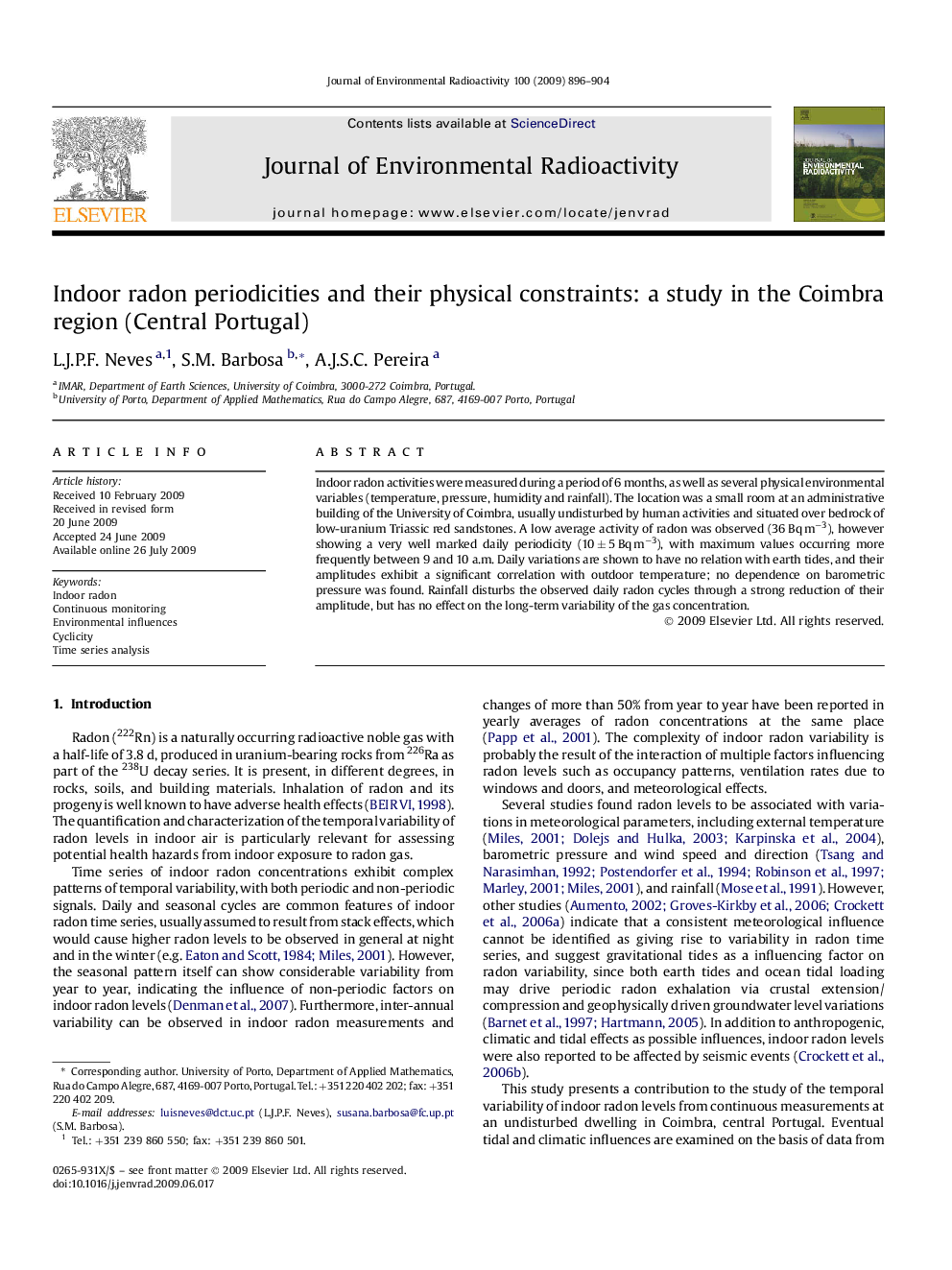| Article ID | Journal | Published Year | Pages | File Type |
|---|---|---|---|---|
| 1738989 | Journal of Environmental Radioactivity | 2009 | 9 Pages |
Abstract
Indoor radon activities were measured during a period of 6 months, as well as several physical environmental variables (temperature, pressure, humidity and rainfall). The location was a small room at an administrative building of the University of Coimbra, usually undisturbed by human activities and situated over bedrock of low-uranium Triassic red sandstones. A low average activity of radon was observed (36 Bq mâ3), however showing a very well marked daily periodicity (10 ± 5 Bq mâ3), with maximum values occurring more frequently between 9 and 10 a.m. Daily variations are shown to have no relation with earth tides, and their amplitudes exhibit a significant correlation with outdoor temperature; no dependence on barometric pressure was found. Rainfall disturbs the observed daily radon cycles through a strong reduction of their amplitude, but has no effect on the long-term variability of the gas concentration.
Related Topics
Physical Sciences and Engineering
Energy
Nuclear Energy and Engineering
Authors
L.J.P.F. Neves, S.M. Barbosa, A.J.S.C. Pereira,
